Different grippers, their specific and target group
Author: Angela Rozema-van Koeveringe
Occupational therapist

Grippers Neon 4 pieces 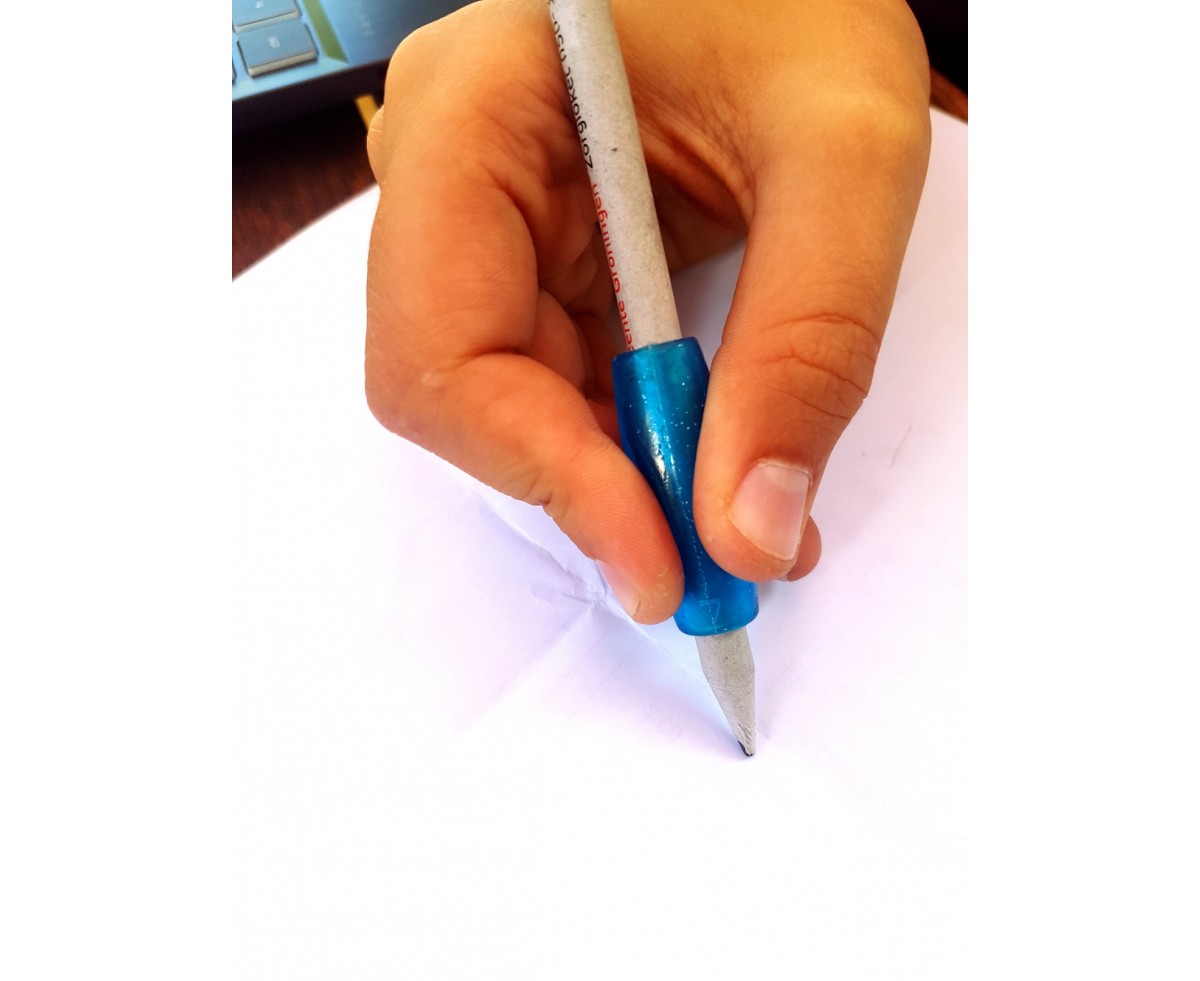
This pencil grip is made of soft silicone and has 3 indentations for the fingers.
It fits pens and pencils with a small diameter and a round shape.
The grip is particularly suitable for children aged 6 and up and is supportive when learning to write.
The material is slightly springy, which can reduce pen pressure. There is also more grip on the pen due to the anti-slip effect of the silicone.
Gripper transparent
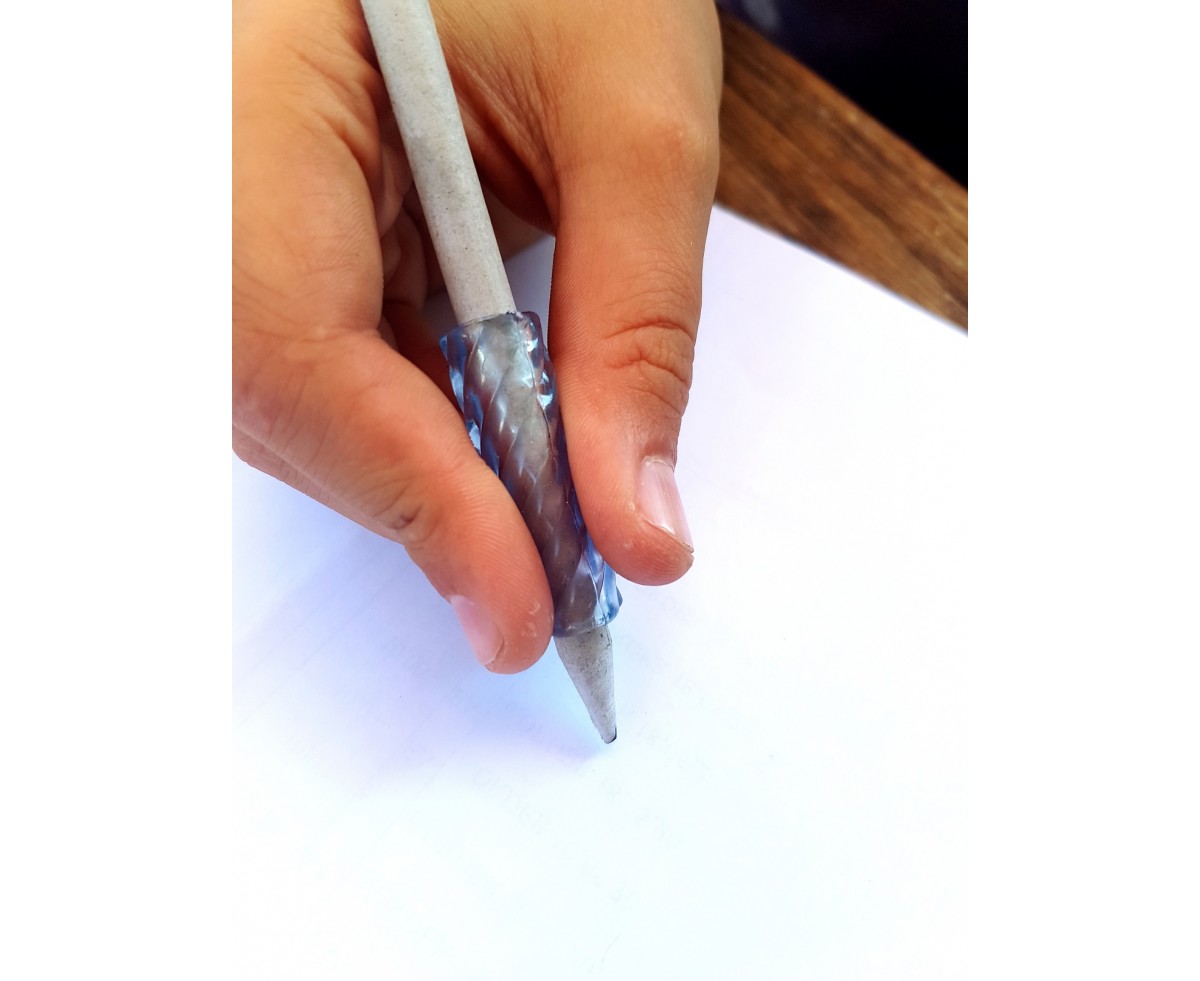
This pencil grip is made of soft silicone. The grip is quite thin, which keeps the thin diameter and gives you an anti-slip effect on the writing material.
The grip fits a pencil with a thin diameter and round shape.
The different structures all provide a different sensory experience; also suitable for children who seek stimulation!
Write it right gripper/Write it left gripper
This pencil grip is specially made for learning a correct pencil grip. There is a version for right- and left-handers.
The grip automatically learns the correct finger position through the 3 notches in the fish.
There is sensory input because you continue to feel the pencil through the grip; this gives the child additional feedback.
The grip can be used from the moment that the child has a clear hand preference. On average, this will be around 5 years.
Alternate using the gripper with colouring with other materials such as our various chalks.
However, from the age of 7, a smaller grip is recommended because of learning the finger movements that are necessary for fluent and fast writing. If a correct finger position remains a problem, then this is a playful and clear aid!
Triangle foam gripper soft
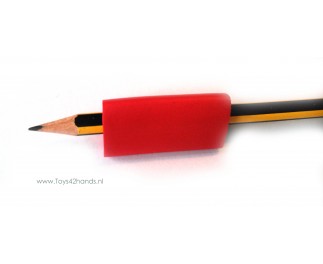
This pencil grip is made of soft foam. It has a larger diameter. This provides a larger diameter of the pencil, but also more resistance when squeezing the writing instrument, pencil or pen. This can be helpful with too much pen pressure.
The triangle shape clearly indicates which position of the fingers is correct.
The gripper is particularly suitable for children aged 6 and over.
Triangle gripper
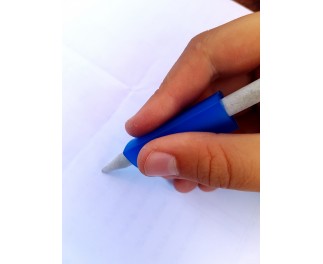
This pencil grip is made of smooth plastic. It feels quite hard, which gives clear feedback to the fingers. The triangular shape indicates which position of the fingers is the right one. The gripper does not spring; it is less suitable for a high pen pressure; the triangle foam gripper is a better alternative.
The gripper is suitable for ages 6 and up.
Pencil grip soft (gripper soft)
.jpg)
This pencil grip is made of smooth plastic. It has a larger diameter. This provides a larger diameter of the pencil, but also more resistance when squeezing the writing instrument, pencil or pen. This can be helpful with too much pen pressure.
The organic shape not only indicates the correct position of the 3 writing fingers, but also guides the correct position and writing angle in the fingers.
The gripper is particularly suitable for learning to write and for older toddlers, i.e. from approximately 5 to 8 years old.
However, from the age of 7, a smaller grip is recommended because of learning the finger movements that are necessary for fluent and fast writing. If a correct finger position remains a problem, then this is a good help.
Pencil grip cross-over
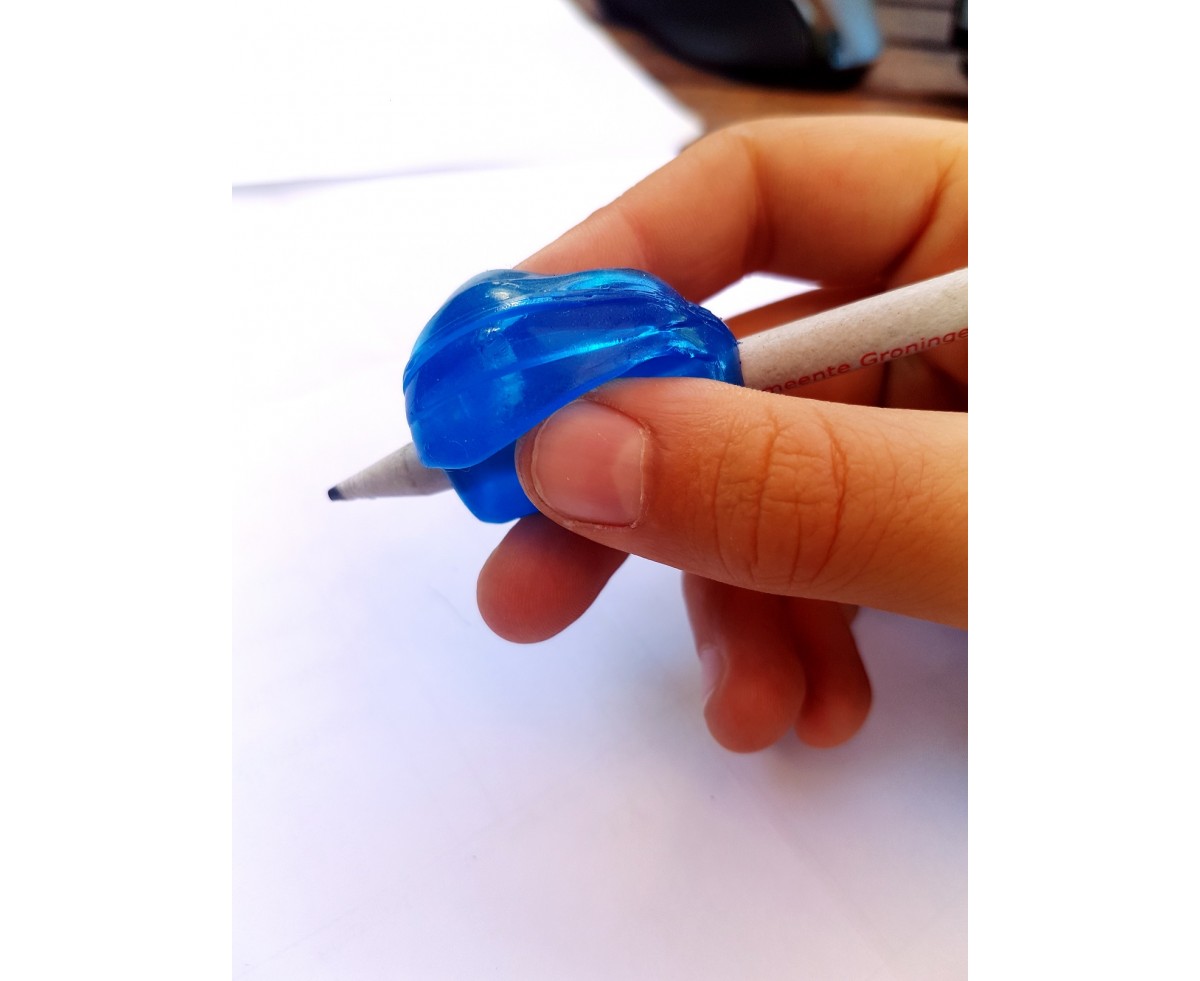
This pencil grip has the same properties as the Pencil grip soft. However, it has 1 important extra property. That is the canopy for the thumb and index finger, the two leading writing fingers. This can be especially helpful for a child who holds the thumb over the index finger while writing; a lateral pencil grip.
Is this visible in your child/pupil? Then this could be a solution!
The other properties are the same as those of the pencil grip soft, without a roof: It is made of smooth plastic. It has a larger diameter. This provides a larger diameter of the pencil, but also more resistance when squeezing the writing instrument, pencil or pen. This can be helpful with too much pen pressure.
The organic shape not only indicates the correct position of the 3 writing fingers, but also guides the correct position and writing angle in the fingers.
The gripper is particularly suitable for learning to write and for older toddlers, i.e. from approximately 5 to 8 years old.
However, from the age of 7, a smaller grip is recommended because of learning the finger movements that are necessary for fluent and fast writing. Is a correct finger position still a problem? And does the lateral grip remain visible? Then this is a good help.
Jumbo Pencil grip
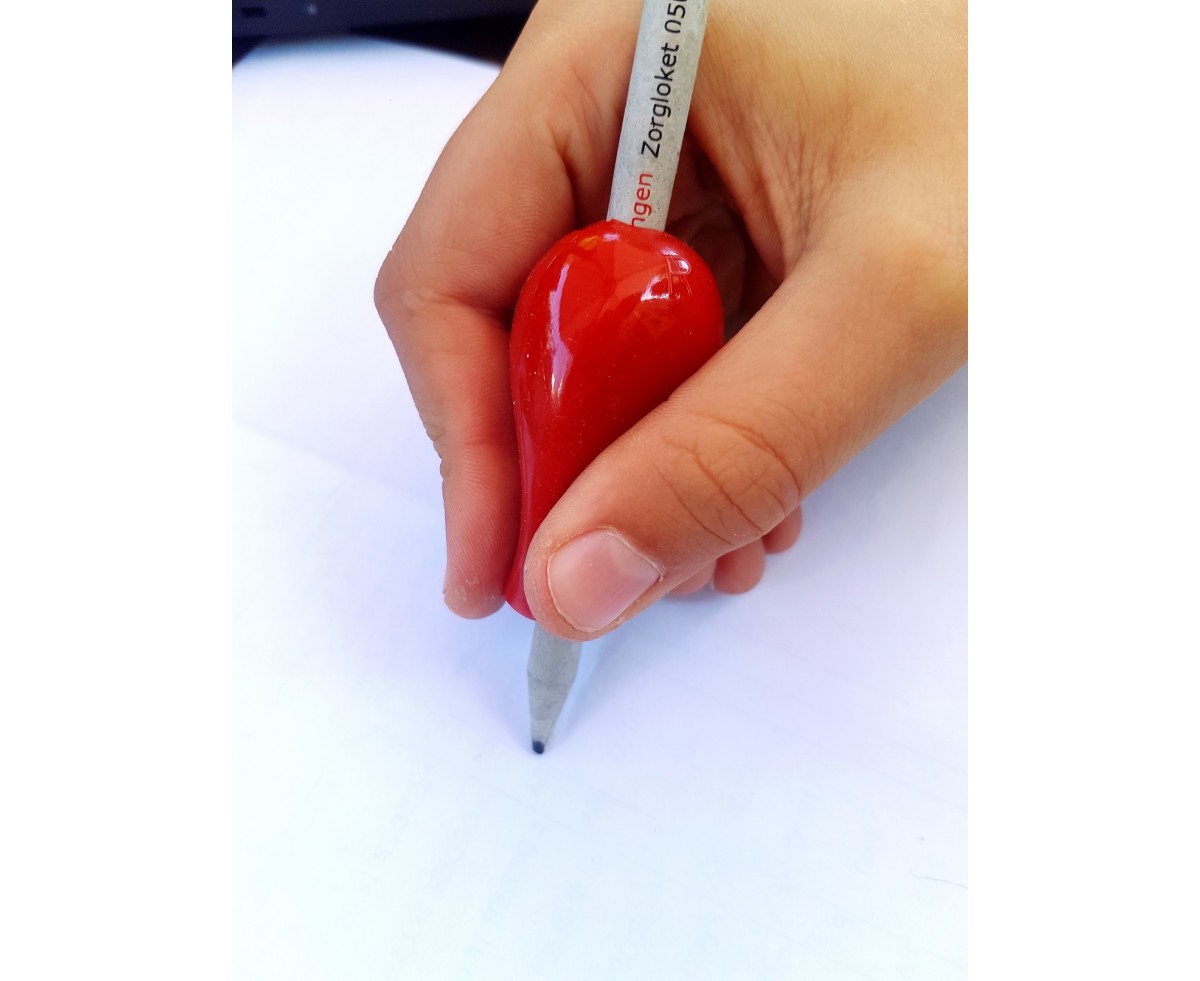
This is the big brother of the pencil grip soft. It has a larger length. This makes it especially suitable for children with a motor disability. Think of a spastic hand, juvenile rheumatoid arthritis, congenital abnormalities, etc.
The grip is too big for learning normal writing motor skills. It is mainly an adaptation of the regular writing tool.
The organic shape not only indicates the correct position of the 3 writing fingers, but also guides the correct position and writing angle in the fingers.
The soft material also absorbs the pinching force. This can reduce the pen pressure.
The jumbo grip is less suitable for very young children because of the large diameter and length. The gripper is …. cm long.
Stetro grip
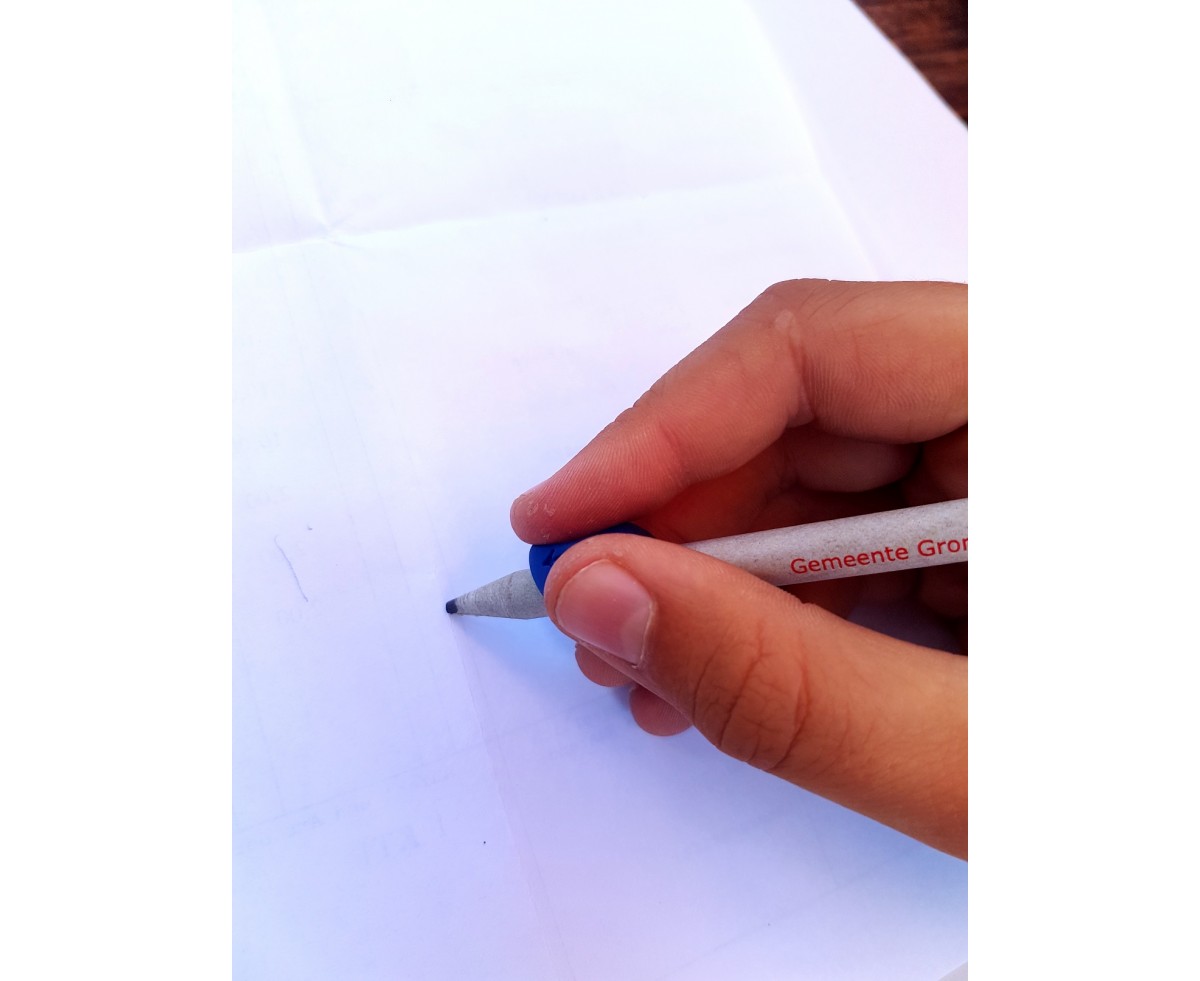
This small grip has been a must-have for years when learning to write. The unique shape indicates the correct finger position when learning to write; the three writing fingers have their own position. The arrow on the side indicates the correct direction for left and right-handed people: arrow towards the tip of the writing instrument for left-handed people, arrow up for right-handed people.
The grip is small in diameter. This places the emphasis of holding the writing instrument on the fingertips; an important reminder of the correct starting position for learning to write with a dynamic pen grip.
This makes the stetro-grip particularly suitable for children aged 6 and over, for older toddlers and in group 3.
Is there a high pendulum or still difficult grip with the right fingers? Then choose a grip that is larger and offers more resistance, such as the pencil grip.








































Leave a comment